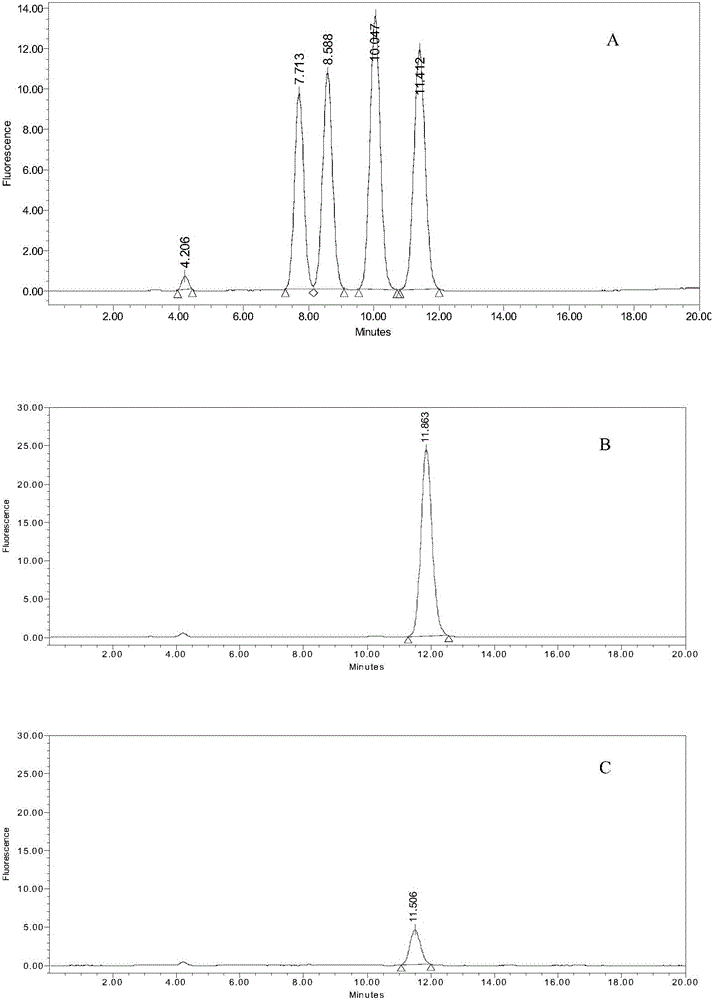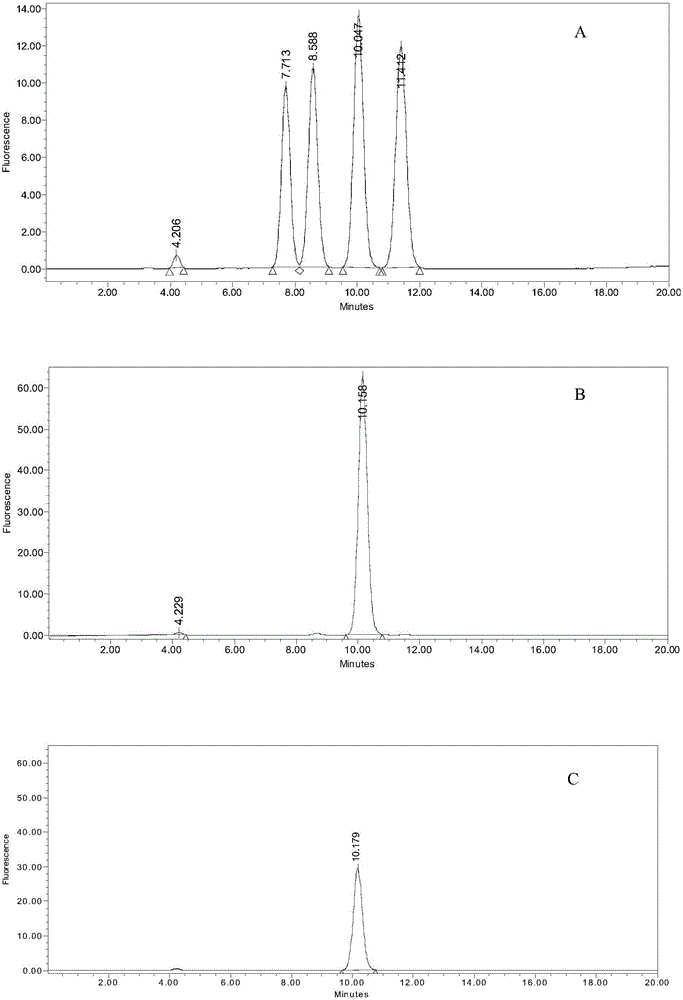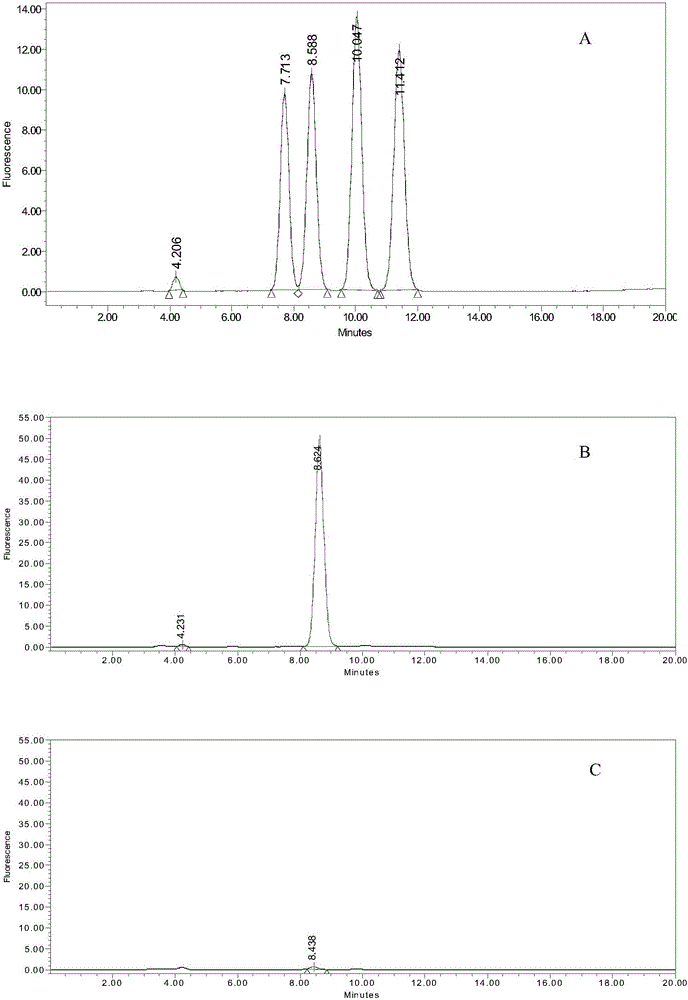A strain of Pseudomonas aeruginosa and its application in degrading aflatoxin
A technology of Pseudomonas aeruginosa and aflatoxin, applied in the direction of bacteria, microorganism-based methods, biochemical equipment and methods, etc., can solve the problems of complex degradation products, large loss of nutrients, and unstable effects, etc., to achieve good results The effect of applying the foreground
- Summary
- Abstract
- Description
- Claims
- Application Information
AI Technical Summary
Problems solved by technology
Method used
Image
Examples
Embodiment 1
[0031] Embodiment 1, the separation and identification of bacteria
[0032] 1. Isolation of bacteria
[0033] (1) In June 2013, the collected soil samples were shaken in sterile distilled water for 15 minutes in an ultra-clean workbench to prepare a bacterial suspension, and the shaker speed was 180rpm.
[0034] (2) Gradiently dilute the bacterial suspension with sterile distilled water and spread it on the NA medium plate, culture it at 30°C for 24 hours, the colonies cover the whole plate, pick the shape, size and color of the plate with an inoculation loop Strains with different transparency were purified by streaking on the plate, and the purified strains were applied to the aflatoxin degradation experiment. The obtained strain with the strongest aflatoxin degradation ability was named N17-1.
[0035] 2. Identification
[0036] (1) According to the method described in "Berger's Bacteria Identification Handbook" (Eighth Edition) and "Common Bacteria System Identification ...
Embodiment 2
[0048] Embodiment 2, the cultivation of Pseudomonas aeruginosa N17-1
[0049] Pseudomonas aeruginosa (Pseudomonasaeruginosa) N17-1 (CGMCCNo.8511) was inoculated in liquid NB medium, and cultured by shaking at a temperature of 37°C and a rotation speed of 200rpm (rotation radius: 20mm) for 24 hours to obtain a bacterial liquid. Used in aflatoxin degradation experiments.
Embodiment 3
[0050] Embodiment 3, Pseudomonas aeruginosa N17-1 to aflatoxin B 1 Degradation
[0051] 1. Aflatoxin B 1 preparation
[0052] 1 mg aflatoxin B 1 (AFB 1 ) Standards were dissolved in 2ml of chromatographically pure methanol to obtain aflatoxin B with a concentration of 500ppb 1 the solution
[0053] Two, get the bacterium liquid that 0.4ml embodiment 2 obtains and place in the 1.5ml centrifuge tube, add the aflatoxin B that 0.1ml concentration is 500ppb 1 To a final concentration of 100 ppb, mix well and let stand at 37°C for 72 hours, then centrifuge at 10,000g for 10 minutes to remove cells, and obtain supernatant, which is recorded as the solution of the experimental group. Add 0.1ml of aflatoxin B with a concentration of 500ppb to 0.4ml of NB medium without bacteria 1 As a control group, it was recorded as a control group solution.
[0054] 3. N17-1 to aflatoxin B 1 Degradation effect detection
[0055] First, 100% methanol was added to the experimental group solu...
PUM
 Login to View More
Login to View More Abstract
Description
Claims
Application Information
 Login to View More
Login to View More - R&D
- Intellectual Property
- Life Sciences
- Materials
- Tech Scout
- Unparalleled Data Quality
- Higher Quality Content
- 60% Fewer Hallucinations
Browse by: Latest US Patents, China's latest patents, Technical Efficacy Thesaurus, Application Domain, Technology Topic, Popular Technical Reports.
© 2025 PatSnap. All rights reserved.Legal|Privacy policy|Modern Slavery Act Transparency Statement|Sitemap|About US| Contact US: help@patsnap.com



